Spring in Thesaloniki
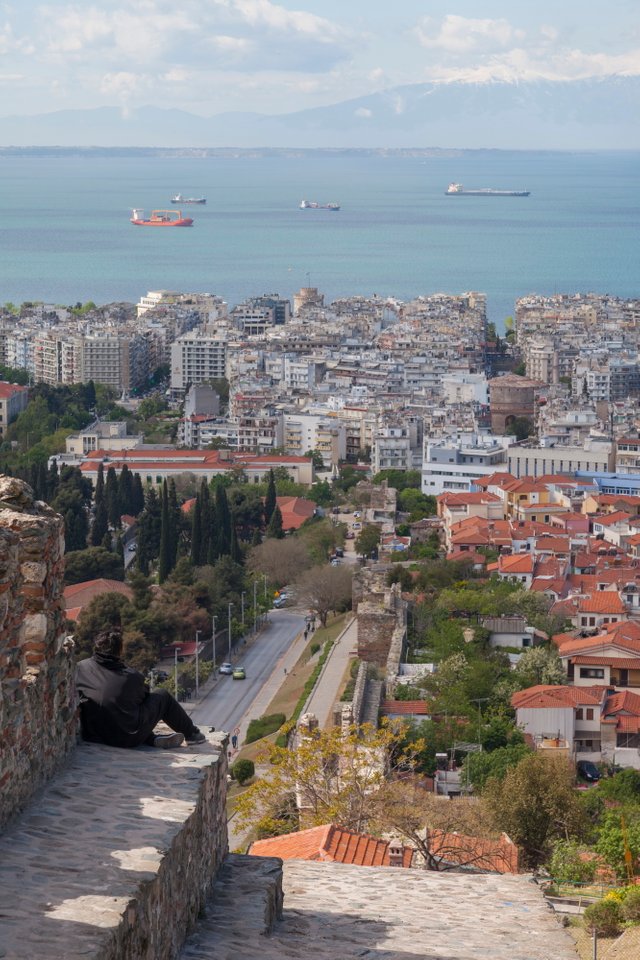
It was a very cold morning today. On the graduates the mark is -20 degrees Celsius. But despite the cold in the air, spring notes are already caught.
Last spring I was in Greece. At that moment in Greece it was already a real summer. Of course it was already May, but in my city in Russia in May it was still snowing and it was very cold.
In a word, today on this cold day I wanted to remember last year's spring in Greece.
The first city I visited in Greece is Thessaloniki.
Thessaloniki is a port city on the coast of the Gulf of Termaikos in the Aegean Sea. In the history of his existence he was under Roman, Byzantine and Turkish influence. This is particularly noticeable in the area of Ano-Poli (Upper Town). So, for example, in the ruins of the palace of Emperor Galerius there is a rotunda of St. George, which at various times was both an Orthodox church and a mosque. In 1917, the city center was badly damaged by the fire. In the XX century, the city was rebuilt and now has a modern European layout.
Thessaloniki is a city with a rich history. For centuries it was inhabited by different peoples.
His creation coincides with the beginning of the era of Hellenism, the world domination of Alexander the Great and his descendants.
The northern capital of Greece - Thessaloniki was founded in 315 BC by Cassander, the king of Macedonia, uniting 26 cities around the Gulf of Thermaicos. The new city he named in honor of his wife, Thessaloniki, the sister of Alexander the Great. Their father, Philip II, gave this name to his daughter in honor of his victory over the Thessalians.
Arch GalleriaHistory of the city of Thessaloniki. GreeceHistory of Thessaloniki. Greece
The second century BC. passed under the Roman rule. Less than two centuries after its creation, like all of Macedonia, the city of Thessaloniki was occupied by the Romans.
In 148 BC. It became the capital of the Roman province of Macedonia.
The city, founded by Cassander, located at the crossroads of trade and military interests, began to develop rapidly. During the Byzantine Empire, it was the second most important city after Constantinople. Here the roads from Rome to Constantinople and from Greece to the Black Sea region converged. Every year a large trade fair was held here, which, after the proclamation of St. Demetrius the patron of the city was called "Demetrius." Naturally, such a tasty piece was always of interest to the conquerors. Over the course of twelve centuries, the walls of the city were repeatedly besieged. A few subsequent centuries Thessaloniki suffer from frequent raids of the Goths, Persians, Thracians, Arabs and Turks. But the city stood up bravely thanks to its high walls.
By the beginning of the IV. for the administration of the Roman Empire was introduced the so-called tetrarchy: the empire was divided into the eastern and western parts, and the reign was supposed to be simultaneously four emperors, the tetrarchs, and they were not in Rome, but in different cities. The Emperor Galerius in 300 BC proclaimed Thessaloniki the capital of the part of the empire that he inherited.
In 324, Constantine the Great built a large port in Thessaloniki. During the reign of Emperor Zeno (475-491 gg.), The Goths again besieged the city. Again, they failed.
In the VI. already the Slavs (sometimes in alliance with the Avars) undertake at least five attempts to capture Thessaloniki.
In the VIII century. on the city began to attack the Bulgarians. The attack in 837 was repulsed with great difficulty by the Byzantines.
In 904, the Arab fleet under the leadership of Lev Tripolis was besieged by Thessaloniki and three days later stormed it. From the Byzantine chronicles it is known that Leo of Tripoli is a native of the Byzantine city of Attalia. The nickname "Trypillian" Leo received from the name of the Syrian city of Tripoli, in which his fleet was based. In Arab sources, Leo is known as the Ghulam-Zaraf. A few days later, after plundering the city and capturing many prisoners, the Arabs abandoned it.
In the XI century. In Byzantium in 30 years, 7 crowned emperors were replaced.
In 1078, Dourachia Vasilaki took over Thessaloniki and proclaimed himself emperor. A part of the army joined him. When the city besieged Alexei Comnin's troops, the townspeople opened the gates and handed over the city.
During this period, many Byzantine churches are being built in the city, many of which have survived to this day.
Byzantine Empire could not prevent in 1185 the occupation of Thessaloniki by the Normans. After a ten-day battle, the city fell and was subjected to terrible looting. It was only possible to release it in 1195.
A few years later, the Franks came (1224), and the city was occupied by Theodor Dukas Komnenos, who proclaimed the city the capital of the Epirus Depot.
Soon after, the city enters its golden age. It is a multi-populated, economically developed, with a cultural life, magnificent monuments, artificially decorated churches and various industries (copper, iron, lead, paper, etc.)
His cultural revival is supported by a number of important speakers, theologians, philosophers, and lawyers.
In 1246, the Nicene Empire seized Thessaloniki and subdued all the lands of the former Epirus despotate (except Epirus).
In 1261, the emperor of the Nicene Empire, Michael Palaeologus, conquered Constantinople from the Latins and rebuilt the Byzantine Empire, where again Thessaloniki entered.
In 1423 Andronicus (one of the brothers of Emperor John VIII) sold thessaloniki Venice. From 1387 to 1402 years. the city belonged to the Turks.
For several years after the onset of the 16th century, the city is developing again, and all the communities of which it is composed live in peace and harmony. At that time, Thessaloniki is a densely populated cosmopolitan center. Thanks to the middle class, which gradually forms until the 18th century, the city acquires the glory of a large shopping center. In the eighteenth century, the Greeks began to compete in the commercial field with Jews playing an important role in the financial, social and cultural life. In 1881, the founder of the modern Turkish state Kemal Ataturk was born in Thessaloniki. 1430 is the year of the beginning of the Turkish occupation. Sultan Murad took possession of Thessaloniki. Since then, almost 500 years, Ottoman rule was established. All the locals who survived the battle, the Turks are forced to leave the city. The first decades after the conquest and because of the decline and decline in the city's population, the Turks sheltered thousands of Jews who were persecuted in Central Europe and Spain, and later, those who prospered in the commercial sphere - were allowed to settle in the city. From the 130,000-strong of the urban population, about 60 thousand were Jews. The rest of the population were Turks, Greeks, Bulgarians and Albanians.
Renamed for Selânik, the city remained in the hands of the Ottoman Empire until 1912 and was one of the most important cities of the empire, with a large port built in 1901.
There appeared gas street lighting, tramway service, telephone communication, electric lines, large industrial enterprises and a modern port. The railway connection connected Thessaloniki with Europe on the one hand, and with Istanbul on the other.
On the site of the walls of the ancient fortress, stretching along the sea, was built quay. Streets were built, houses, schools, and hospitals were built. Unfortunately, then many historical monuments were lost.
In the first years of the 20th century, throughout the whole of Greece, rebel movements began to emancipate from Turkish rule.
Thessaloniki was the main prize in the First Balkan War of 1912, during which it was successfully captured. On October 26, ... on the day of his patron Saint Demetrius, the Greek army entered the city and was liberated after 500 years of Ottoman rule. King George I of Greece was killed in Thessaloniki in March 1913.
In 1915 during the First World War, most allied forces landed in Thessaloniki. using the city as a base for an offensive against pro-German Bulgaria.
Much of the city was destroyed by a fire in 1917, of unknown origin. Eleftherios Venizelos (Prime Minister of Greece) banned the reconstruction of the city center until a full plan is prepared. Only a few years later the French architect and archaeologist Ernest Hebrard had achieved the goal. According to this plan, the eastern borders were completely washed away and the city acquired the European face.
Significant damage to the city was inflicted during the German occupation of 1941-1944, during which time the Allies constantly bombed. Virtually the entire Jewish population was destroyed by the Nazis. However, after the war, Thessaloniki was restored fairly quickly. As a result of the outflow of the Turkish population (1922-23) and the genocide of the Jewish population during the Second World War, Thessaloniki again became almost entirely a Greek city.
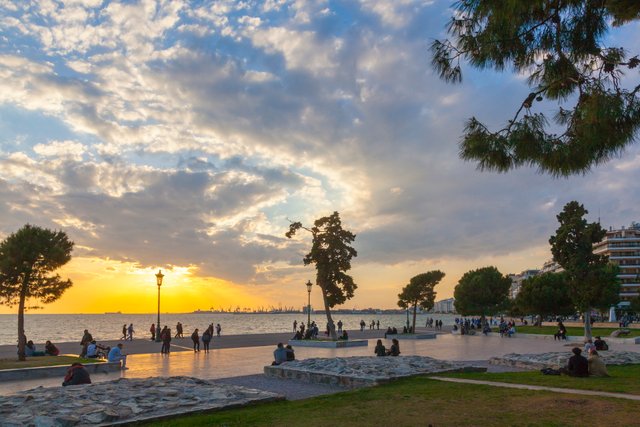
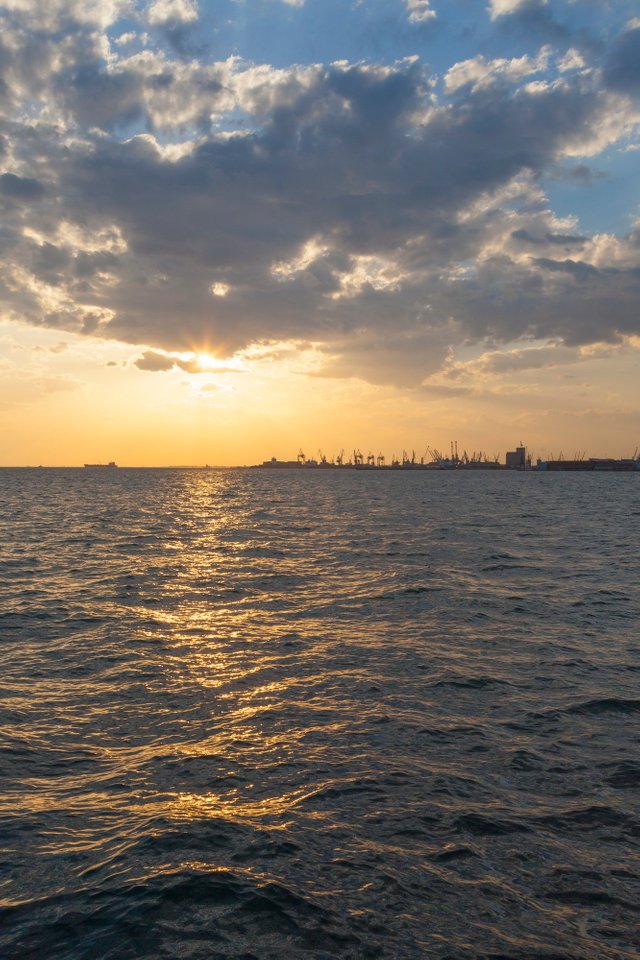
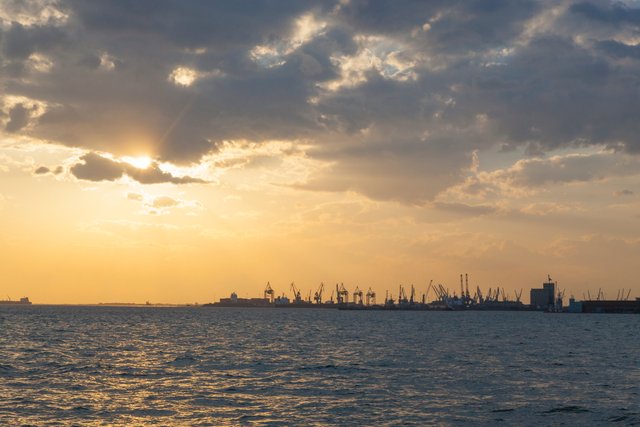
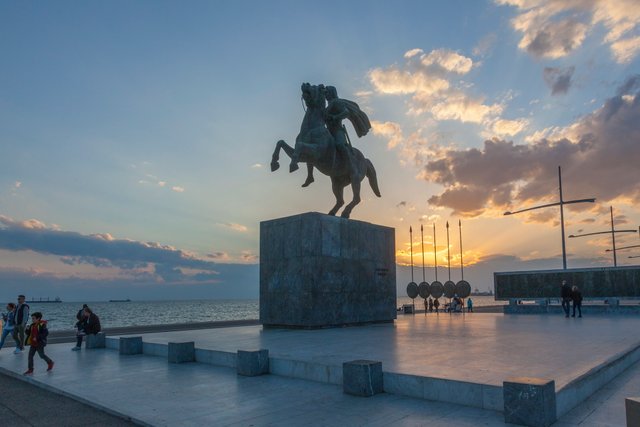
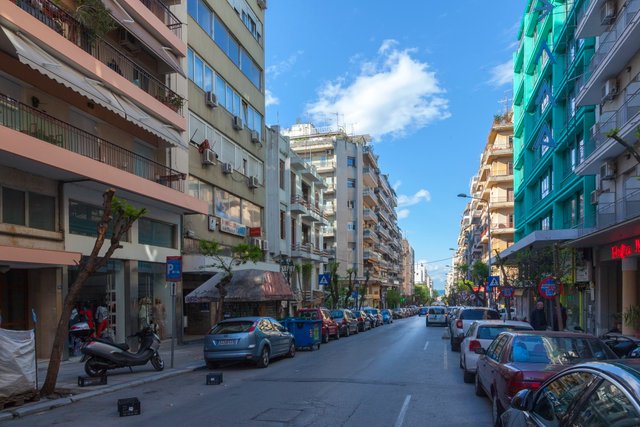
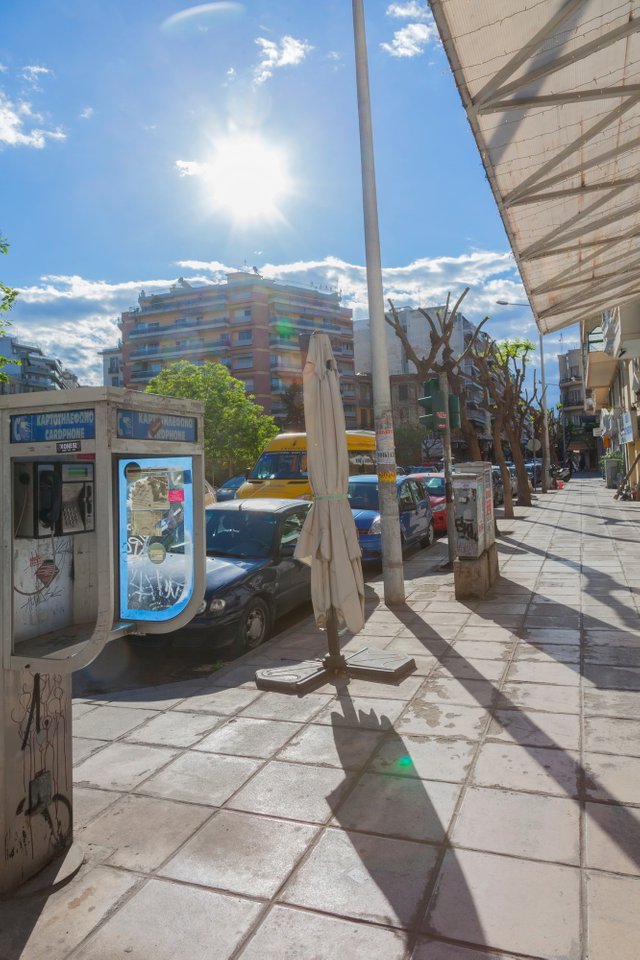
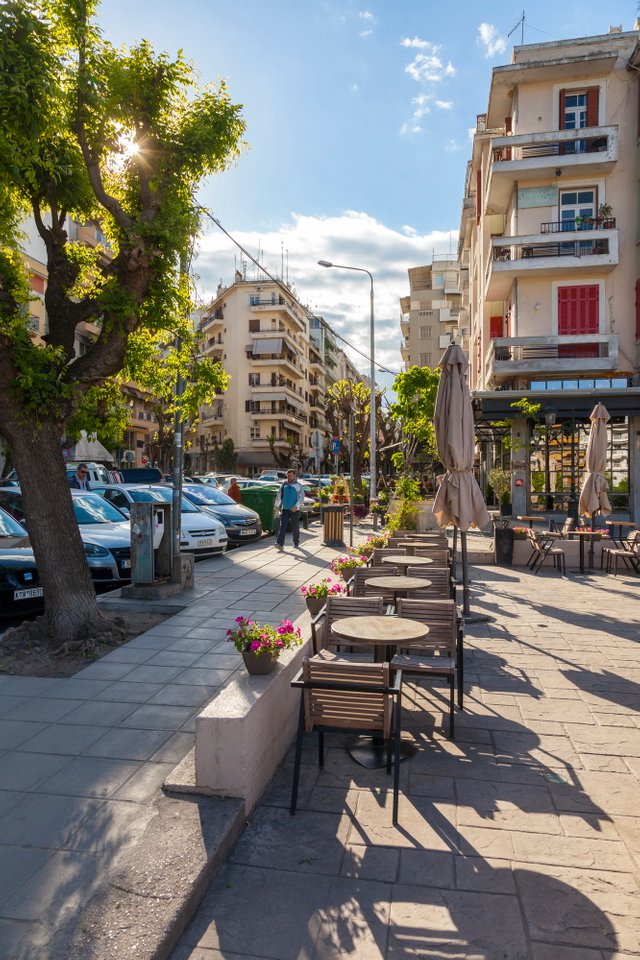
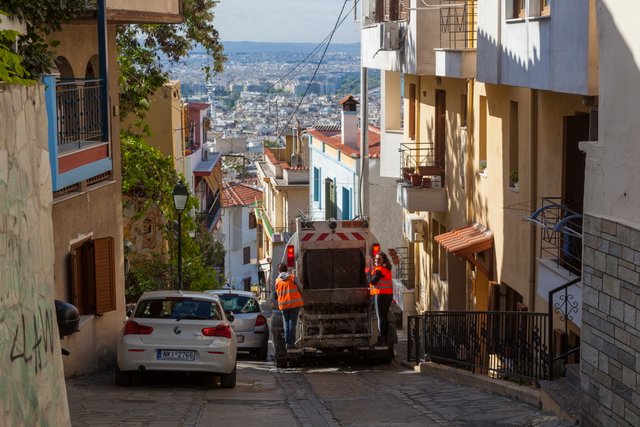
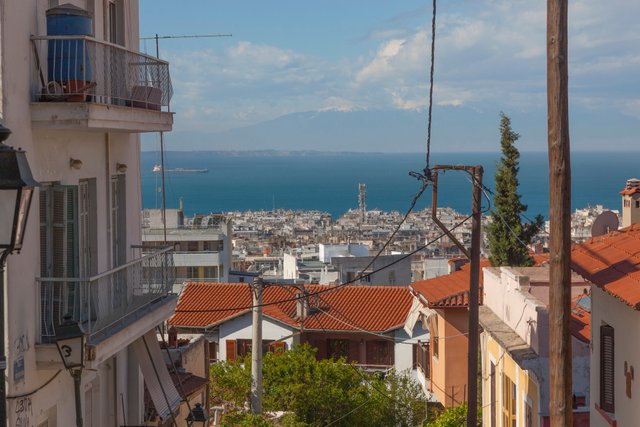
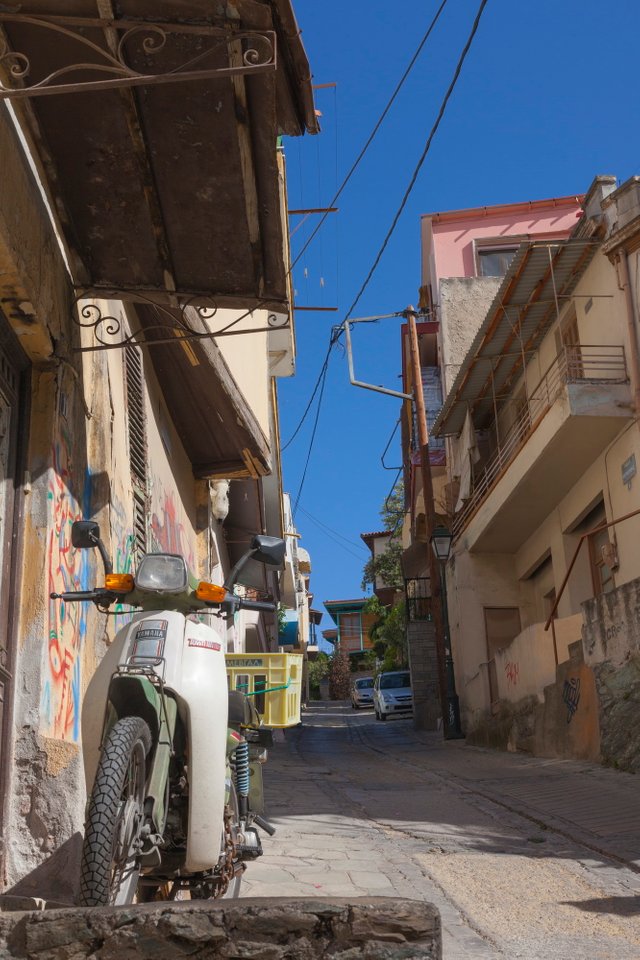
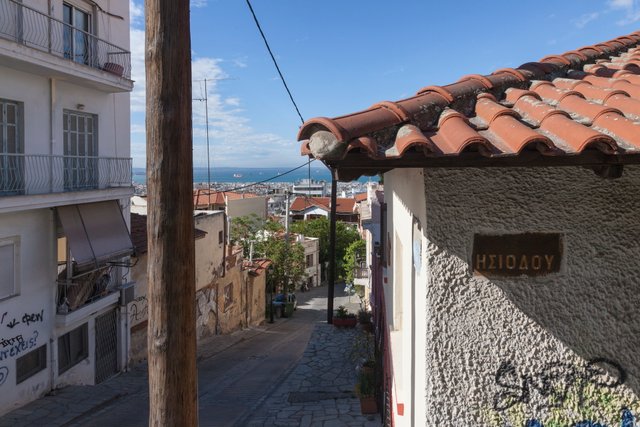
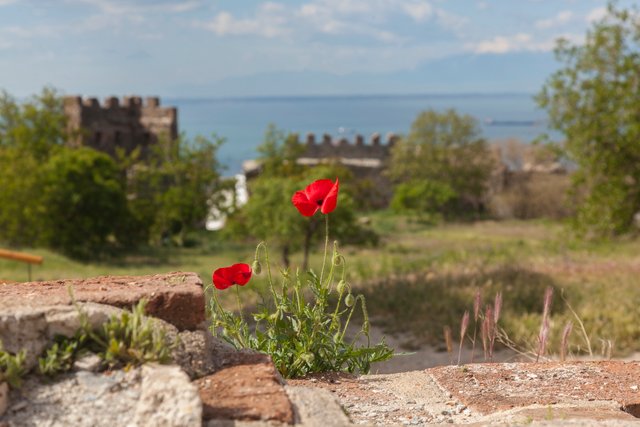
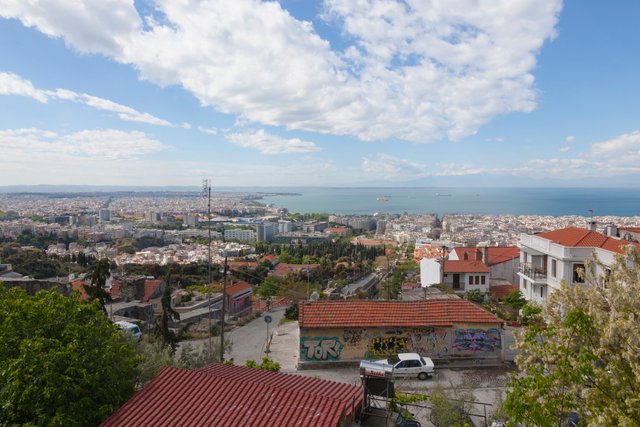
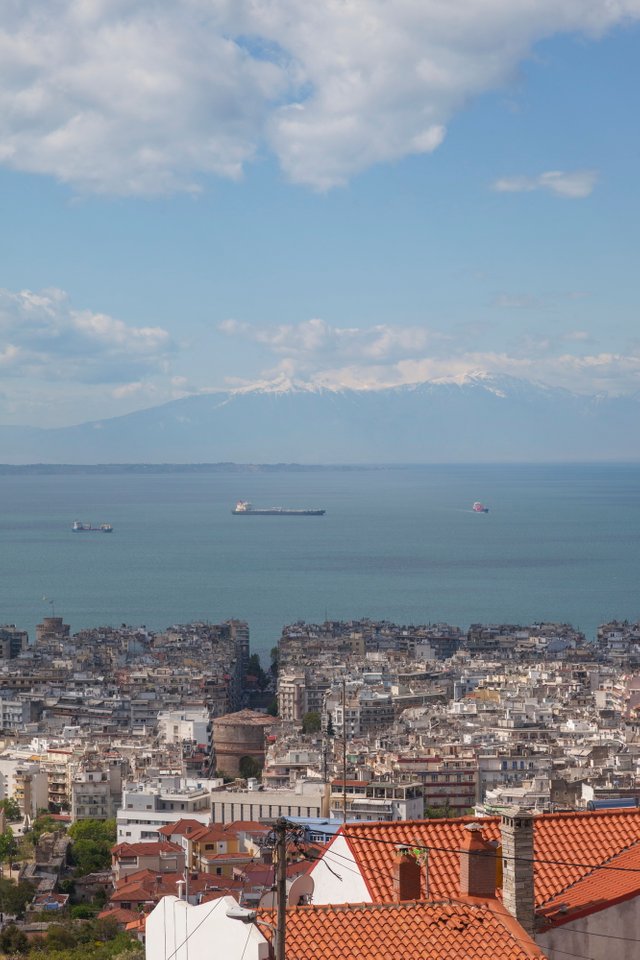

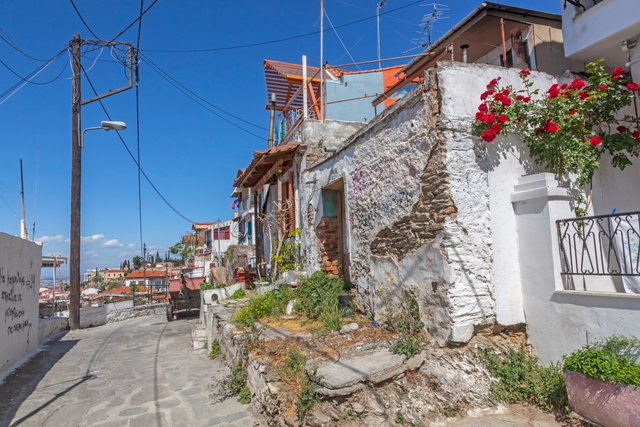
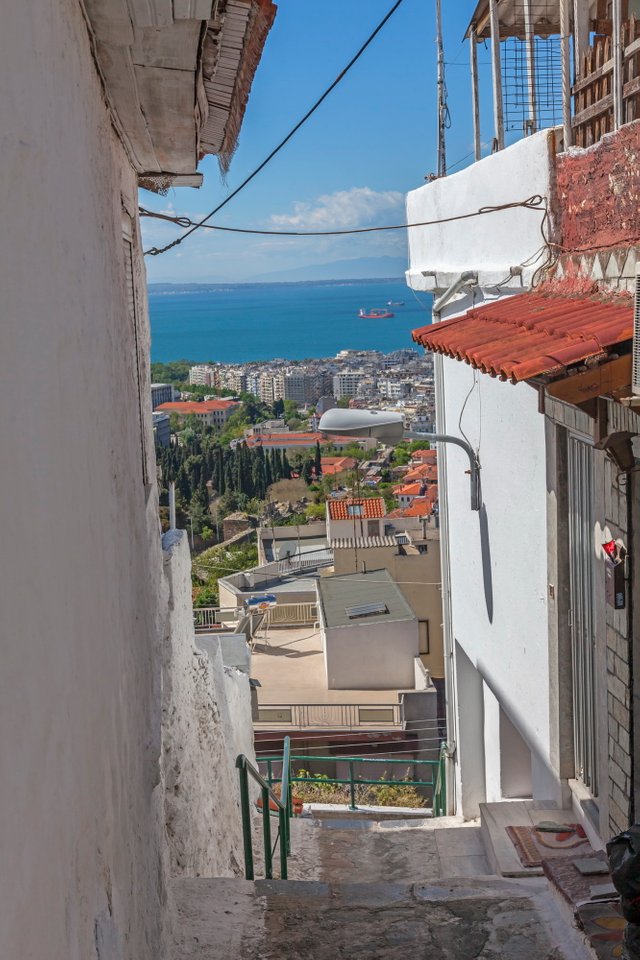
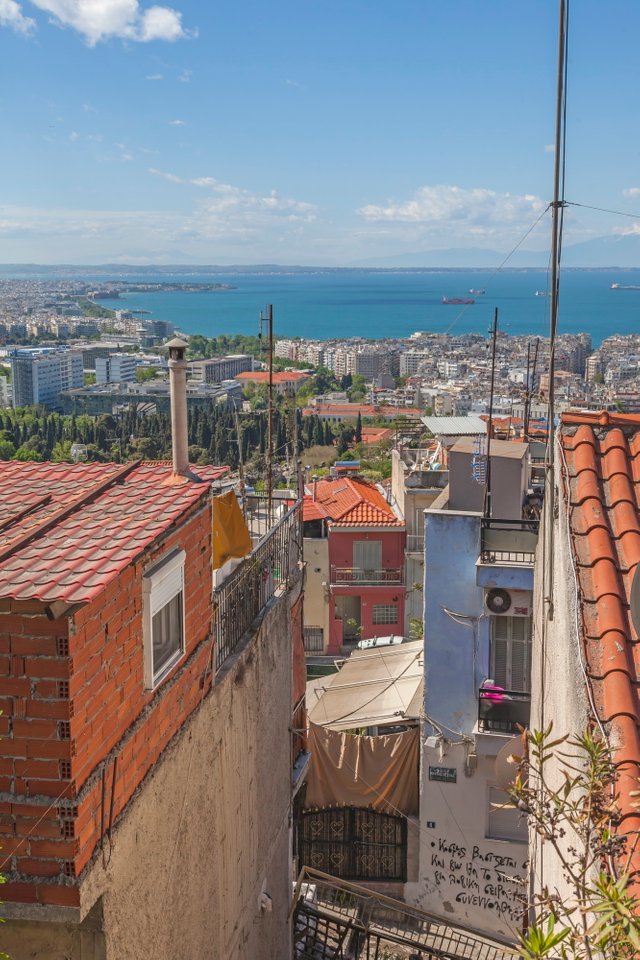
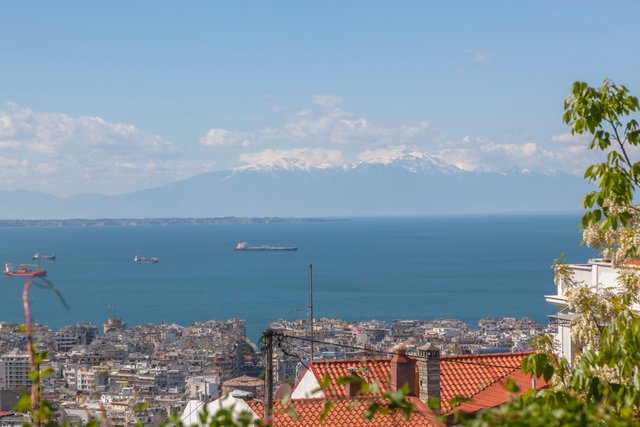
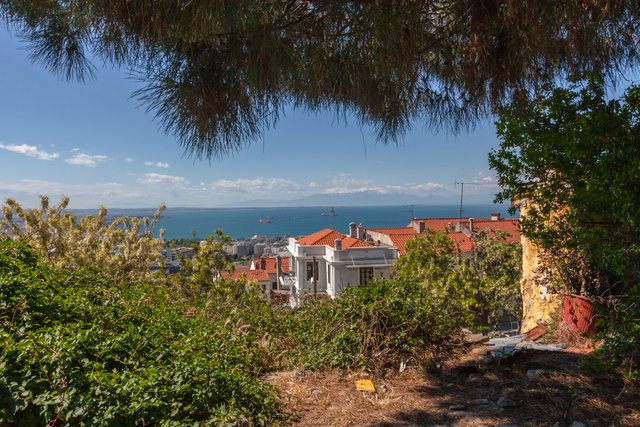
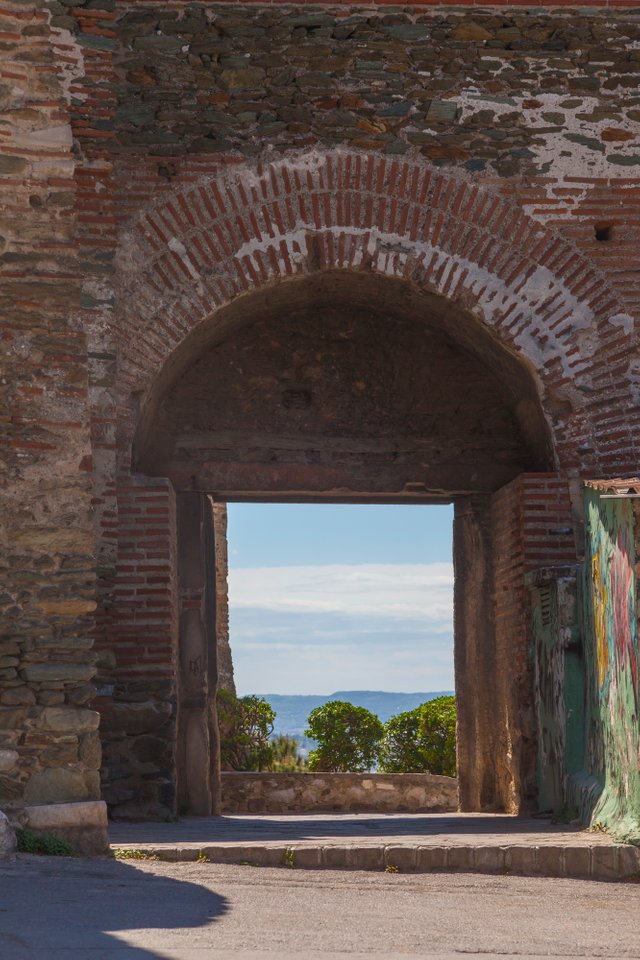
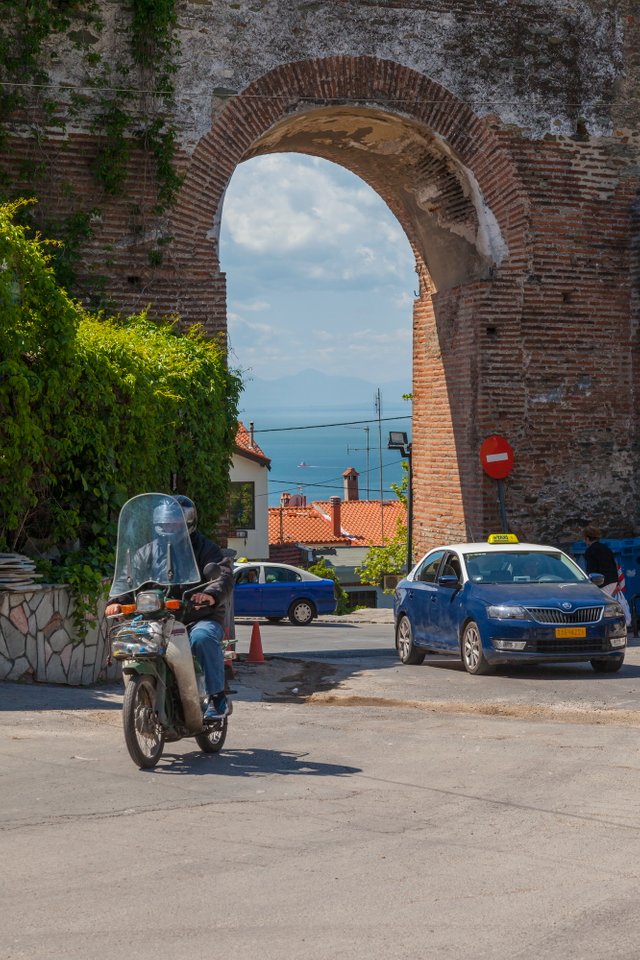
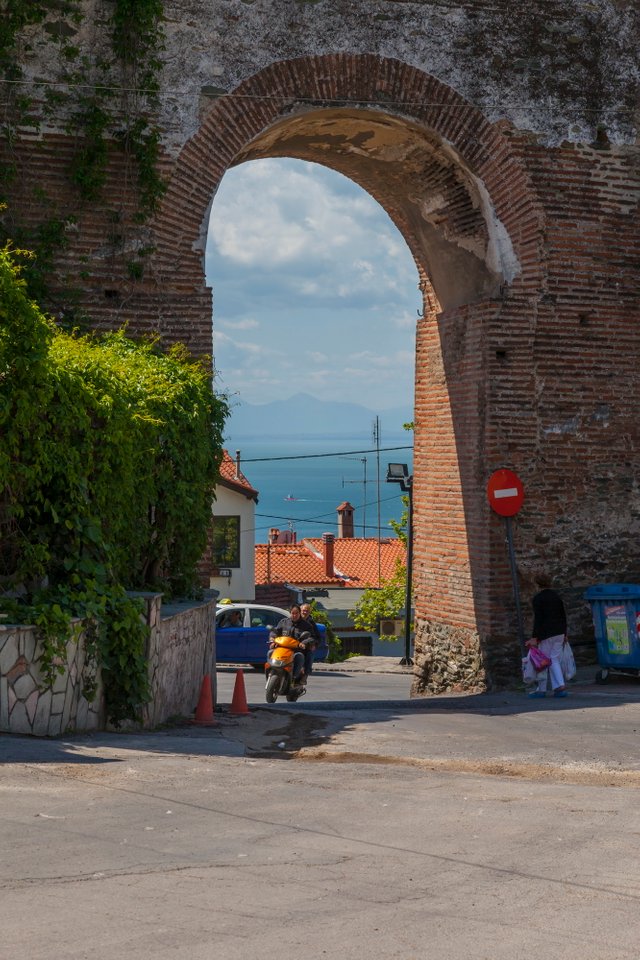
World of Photography Beta V1.0
>Learn more here<
You have earned 6.00 XP for sharing your photo!
Daily photos: 1/2
Daily comments: 0/5
Multiplier: 1.20
Server time: 08:13:13
Total XP: 351.67/400.00
Total Photos: 51
Total comments: 11
Total contest wins: 1
Follow: @photocontests
Join the Discord channel: click!
Play and win SBD: @fairlotto
Daily Steem Statistics: @dailysteemreport
Learn how to program Steem-Python applications: @steempytutorials
Developed and sponsored by: @juliank
Congratulations, Your Post Has Been Added To The Steemit Worldmap!
Author link: http://steemitworldmap.com?author=amikphoto
Post link: http://steemitworldmap.com?post=spring-in-thesaloniki
Want to have your post on the map too?
Congratulations, your post was discovered and featured by @OCD in its daily compilation 196!
You can follow @ocd – learn more about the project and see other Gems! We strive for transparency.
If you would like your posts to be resteemed by @ocd to reach a bigger audience, use the tag #ocd-resteem. You can read about it here.
@ocd now has a witness. You can vote for @ocd-witness with SteemConnect or on Steemit Witnesses to help support other undervalued authors!